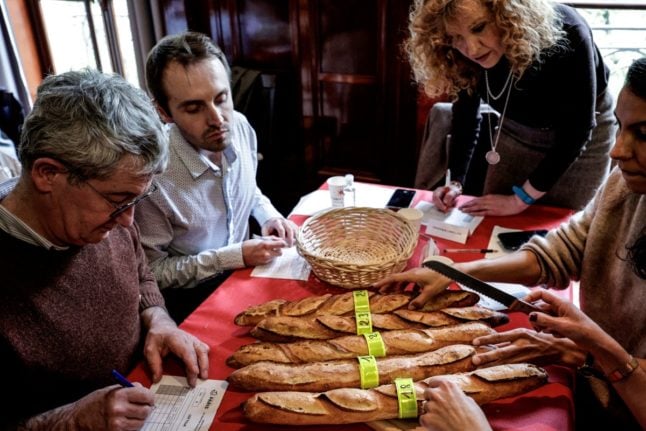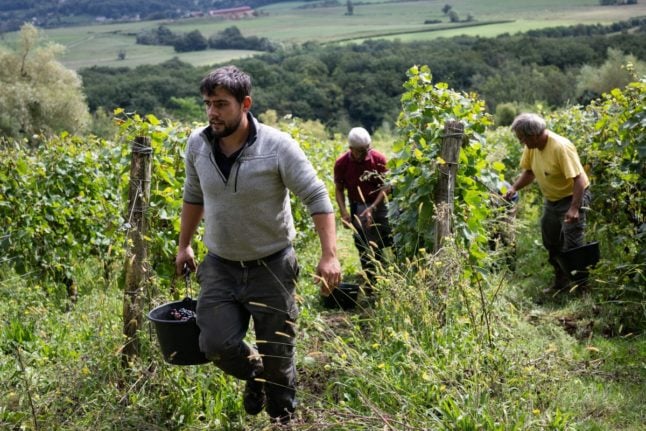The baguette is such a revered symbol of France that it is inscribed as an ’emblem of French national cultural heritage’ and is also on the Unesco world heritage list of ‘intangible cultural assets’.
The croissant, despite being Austrian in origin (well, sort of – the French perfected it), is scarcely less iconic and can be used as a symbol of France itself.
But while these boulangerie creations undoubtedly have a long and storied history, are their modern incarnations actually any good?
This week Jordi Gallés, CEO of the Spanish firm Europastry, one of the world’s top makers of frozen baked goods, revealed that his company has a substantial presence in France, telling the UK’s Financial Times: “Any iconic chain, French, English, or Spanish, all of them, to a greater or lesser extent, use frozen products.”
In 2021, frozen products accounted for 24 percent of all pastries and other sweet baked goods sold in France.
So does that mean that the croissants, pain au chocolats/chocolatines and other pastries sold in France are no good? What about those supposedly idyllic baguettes?
Getting worse
We asked readers of The Local France for their experiences of French bread and pastry offerings, and many agreed that there has been a decline in quality – some said the actual products were worse, while others blamed ‘shrinkflation’ for them just getting smaller.
Roujan told us: “After 32 years of living in Hérault in the south of France I certainly believe that baguettes are not the same. You can’t seem to get the fluffy insides and the crispy crust.”
Nicolle in Paris said: “There has definitely been a decline in quality, I rarely eat them any more as they are horrible.”
Barney in Nîmes said: “It really depends where you buy them – some boulangers still bake all day and produce fantastic tasty baguettes and buttery croissants. Others sell products that taste like straw.”
One American visitor to Bordeaux and Haut-Medoc told us: “I was just there for seven weeks and I get better pastries in California. It’s gone down in quality so far it’s not possible to believe.”
Where to buy
But the most common reaction – from about 70 percent of readers – is that it simply depends on where you shop. While many agreed that the number of places selling poor quality bread and viennoiserie are on the rise, most readers told us that after a little searching they had managed to find a place
Johnny in Paris said: “It really depends on where you buy them. Look for the boulanger baking right in front or just in the back.”
Sheila in Marmande said: “The bread in our local boulangerie is good, cooked every day” and she added an important tip “look for a place that has people queuing outside.”
Gilbert Schulenberg in Paris agreed, saying: “Look for long lines in front of the shop”, adding that “it all depend son where you shop, but it has become more difficult to find a place selling quality products.”
Nick in Nice said: “You do have to search for a decent croissant – anywhere selling almond croissants is unlikely to be great.”
David in Paris echoed the advice about placed with long queues and said: “Choose a boulanger, who make their own bread, as opposed to a boulangerie who distribute bread.”
Deb in Montpellier said that he hadn’t noticed a decline but added that he is careful to “buy from independent boulangeries, they are still proud of their baking.”
Tips for finding the best bread and pastries
So what should you look for when picking a boulangerie? Well as our readers pointed out, long queues of locals are always a good sign.
Several people also recommended looking for a boulangerie that is bio (organic) or artisinal (artisan) – these labels have specific meanings in France and businesses have to meet the criteria in order to label themselves in this way.
Bio, red label and artisan – what do French food labels mean?
Bakery awards are often a good sign – while some of the ‘gold medals’ seen on bottles of wine are pretty meaningless the awards for the best baguette in each town or region are taken seriously and judged by independent experts. Check the date that the award was given, however, just because a boulangerie was great five years ago, it doesn’t mean that it’s bread is still top-notch.
The boulangerie that is judged to be the best in Paris wins a one-year contract to supply the Elysée Palace, so the French president always gets good bread.
When looking for a good baguette the best option is usually the baguette de tradition – this must be made with only four ingredients and boulangeries that offer this usually take their bread seriously. They are usually an extra 10 or 20 cents, but many bread aficionados consider that a price worth paying.
In 2017 one French baker launched an effort to also get a ‘tradition’ mark for the croissant after complaining that too many boulangeries were buying in their croissants from factories.
Frederic Roy, from Nice, said that a traditional croissant should be made on the premises and use French butter and additive-free flour, and the ‘tradition’ mark would show which bakeries do this. So far, however, nothing has come of his efforts.
In the end, however, as many of our readers admitted, it’s simply a question of trial and error – which is not all bad, it means that you get to sample multiple examples of French bread and pastries before picking your favourite.
As Warwick in Strasbourg put it: “Keep on sampling!”
You have to get out of bed in good time though, the best places tend to be popular with locals and have often sold out of fresh pastries by mid-morning.



 Please whitelist us to continue reading.
Please whitelist us to continue reading.
That person claiming bread and pastries are better in California cannot be trusted. If he is also offering to sell you a bridge in Brooklyn, I strongly recommend you have it thoroughly inspected before signing any papers.
Helpful tip to the “Tastes Like Straw” people – if you are buying your baguettes from CarreFour/Franprix/Monoprix because the line at the boulanger right next door is too long, go ahead and spend the extra 30 seconds waiting in that line.